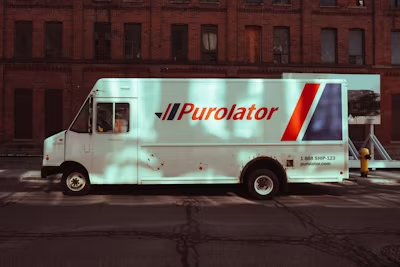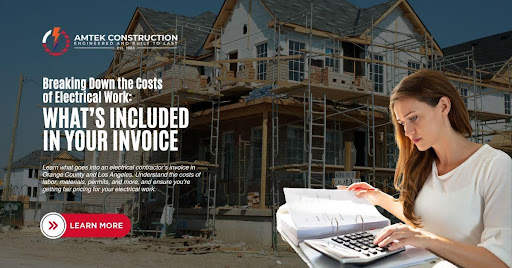Business
NDIS Supported Independent Living vs. Respite Care: The Differences

NDIS is an initiative that helps people with different levels of disabilities to take care of their individual needs. As long as you are using NDIS funds in the right way, you are leading your life happily.
However, many caregivers or people with disabilities wrongly assume two different services to be one when planning their NDIS funds. This happens more often when you are considering NDIS supported independent living (SIL) and respite care services. As similar as they may appear, there are minor differences that sets both of them apart.
This blog will uncover the differences between supported independent living in Melbourne and respite care to help you choose the right service for your disability goals.
Supported Independent Living and Respite Care: What’s the Difference?
In context to the meaning, purpose, services, and benefits, let’s begin with understanding the differences between NDIS independent living and respite care services.
-
Meaning:
Supported Independent Living:
It is a service that suits well for people with disabilities who need care and attention within their comfortable homes or shared living houses. If you are a person who needs support to do daily living activities within your house, the supported independent living in Melbourne will serve your goal.
Respite Care:
Respite Care is an accommodation facility that you will receive in the NDIS provider’s settings when your primary caregiver is on a temporary break. Under this service, you can either live for a few days to as long as 3 months, depending on how long you need a place for daily assistance and medical care.
-
Purpose:
Supported Independent Living:
The main intention behind providing this service is to assist individuals with disabilities to manage cooking, cleaning, budgeting, medication, and commuting on their own.
Whether you choose to call a support worker inside your home or choose to live in the shared living spaces, supported independent living in Melbourne is a disability service that helps you to take control of your life for as long as your disability impacts your living.
Respite Care:
The purpose of respite care service is to help the caregivers of the eligible NDIS participants plan short breaks and emergencies. This, in addition, helps people with disabilities, especially the ones with high intensity needs and chronic illnesses, continue receiving the care they need in the absence of caregivers.
-
Services:
Supported Independent Living:
It is a long-term care that prepares you to live independently. Here are some services that you get when you choose to include supported independent living in Melbourne in your NDIS plan:
- Helps with daily household chores.
- Assist you in making bed, getting out of bed, bathing, grooming, and preparing meals.
- Supervise you in making grocery shopping lists, planning the priorities, budgeting, and buying things on your own.
- Guide you through medication plan, the number of daily dosage requirements, and reading the labels.
- Shared living arrangements promote social life.
Respite Care:
It is a short-term living assistance where you get the following services over and above the space to live in.
- Assistance with personal care like toileting, bathing, grooming, and eating.
- Managing medications.
- Offer emotional and social support while they live in shared living spaces.
- Assistance with mobility aids and walking assistance.
- Flexibility to choose in-home respite, day programs, or overnight stays.
-
Benefits:
Supported Independent Living:
You can expect the following benefits under the NDIS-approved disability services like Supported Independent Living in Melbourne:
- Encourages independence in the lives of people with disabilities to take charge of their lives despite the disability.
- Promotes essential life skills that boosts confidence for people with disabilities who are not struggling with severe illnesses and are capable of living an independent life.
- Flexible support structure that helps you to manage your living as per the type of disability and extent of care you need.
Respite Care:
You can expect respite care services to learn the following benefits.
- Helps caregivers to rest, recharge, and attend their personal needs with the assurance that their dependents are receiving the best care.
- Allows you to continue receiving the supervision for daily living chores, personal needs, and health management disability services.
- Day care programs or shared living arrangements in respite care allows people with disabilities to be active socially and embrace new changes.
Final Words
We hope you found this blog useful. NDIS is a comprehensive funding program that funds both of the Supported Independent Living and Respite Care disability services in Melbourne.
If supported independent living in Melbourne is suitable for people with disabilities who can partially manage their life but still requires comprehensive support, then respite care is suitable for people who cannot figure things on their own and require a separate housing to address their chronic disability needs. Find and address your common concerns with a nearby NDIS provider to avail these disability services in Melbourne and near to its suburbs.
Business
The Best AI Ad Generator for Startups Without a Design Team

Let’s be honest: when you’re building a startup, design is rarely your first hire. It’s expensive, time-consuming, and often feels like a luxury when you’re juggling product, GTM, and fundraising.
But here’s the thing: in a world where attention is currency, your ad creatives do matter.
So what do you do when you’ve got no design team, no time, and zero patience for Photoshop?
Turn to AI Ad Generators.
These tools aren’t just a way out. For startups running lean, they’re the difference between launching fast and getting stuck in creative limbo.
Why Startups Without a Design Team Need AI Ad Generators
Startups run on tight deadlines, tighter budgets, and even tighter bandwidth. A solo founder managing product demos by day and tweaking ads at midnight simply doesn’t scale. That’s where AI comes in. It allows you to keep pace without sacrificing output quality.
- Cost-effective: Imagine spending $500 for a designer to build a carousel ad vs. using a free AI ad generator that gives you 10 versions in under an hour. That’s a no-brainer for early teams with a tight budget.
- Fast execution: A SaaS founder told us they launched their entire Black Friday campaign in a single afternoon using an ai ad generator free platform—copy, images, and platform specs included.
- Scale-ready: When you’re A/B testing five hooks across Meta, Google, and YouTube, you don’t want to wait on creative ops. AI helps you create dozens of variants in minutes with the help of an AI ad generator.
- Competitive edge: You’re not stuck in Figma or chasing freelance designers. You’re already live with version one, testing real feedback generated from the best AI ad generator you can find.
Can an AI Ad Generator Truly Replace a Design Team?
No, but it can replace the repetitive stuff. When you’re launching a sale and just need five versions with different CTAs or images, AI handles it without complaint. It’s especially powerful when paired with an AI image ad generator that quickly delivers scroll-stopping visuals.
Where AI excels:
- Speed & efficiency: A growth team at a DTC brand used a free ai ad generator to spin up a full funnel of creatives during a weekend flash sale. No one needed to open Illustrator.
- Consistency: One founder shared how their AI tool helped maintain consistent branding across 25 ad creatives—each exported in different platform specs, even using an ai video ad generator for top-of-funnel storytelling.
- Data-driven: Several tools analyze top-performing past ads and suggest updated versions. That’s like having a strategist on autopilot.
Where it still lacks:
- Original storytelling: A campaign about grief or nostalgia likely needs a nuanced touch. AI can’t quite craft that emotional arc.
- Emotional intelligence: A skincare startup founder shared how the AI-generated ad had all the right words but missed the soothing tone they wanted to convey. That needed human revision.
What Makes the Best AI Ad Generator for Startups?
Picking the right tool depends on what you want to get done—fast.
- Ease of use: Founders love tools where they can just log in, fill out a brief, and hit generate. No 30-minute learning curve.
- Customization: A B2B team added their fonts and tone-of-voice settings to make all ads match their sales decks. Everything felt on-brand instantly.
- Platform versatility: You’re running LinkedIn ads for lead gen and Instagram stories for awareness. The best tools adapt formats without making you resize manually.
- Speed: During a product launch, a team built creatives while reviewing copy on Zoom. The ads were ready before the call ended.
- Output quality: One marketer shared they got better visuals from an ai image ad generator than what their design intern had managed in two days.
- Analytics: Getting a predictive score on which ad might perform better helps you skip the guesswork.
- Templates: Whether you’re pushing SaaS demos, ecom discounts, or app downloads, the right template cuts hours of effort.
- Collaboration: You make the ad, your co-founder leaves feedback, your intern uploads to Meta. All inside one dashboard.
- Pricing: Most early-stage startups need tools with generous free tiers. A $30/month plan that replaces a $2,000/month designer? That’s gold when choosing the best AI ad maker.
Standout Features That Make a Difference
Some features save more than time—they save sanity.
- Brand kit integration: Upload your logo, pick your fonts and colors once, and never worry about mismatched creatives again.
- Predictive analytics: Before launching, you already know which version has a better chance of converting.
- AI copywriting: An early-stage SaaS used the tool to spin 10 different headlines for the same feature. Two beat their previous top performer.
- Multilingual export: A founder testing in LatAm markets said auto-generating ads in Spanish and Portuguese made global scaling feel local.
- No design skills needed: Even a content marketer or founder can look like a full-blown creative team. One founder said it felt like hiring a designer, copywriter, and media buyer—in one click.
Top AI Ad Generators Startups Should Explore
Here are tools that early teams swear by:
- Quickads.ai — Super fast and great for teams without designers. A bootstrapped DTC brand used it to launch 20 creatives in 15 minutes.
- Predis.ai — Works well for building out engaging social media posts that look natively designed.
- Sivi AI — Ecommerce brands love the auto product integration.
- AdCreative.ai — Especially useful for performance-driven teams that A/B test aggressively.
- Canva AI — If your team already uses Canva, this feels like magic.
- AdGPT — Ideal if you want to brief your campaign via chat and let AI do the rest.
- Creatopy — Handles bulk generation for different platforms like a champ.
All of these qualify as a free online ai ad generator to start with, offering at least basic plans before you scale up.
Bonus: Can AI Ad Generators Fit Into Your Growth Stack?
Yes. And once they do, you won’t want to go back.
- Use AI to build ad sets for each funnel stage—top of funnel awareness, retargeting, and conversion.
- Pair the creatives with A/B testing tools and track CTR and ROAS.
- Export creatives and plug them directly into Google Ads or Facebook Business Manager.
- Repurpose high performers into email headers, banners, or landing page visuals.
- Build a creative swipe file using the tool’s exports to find patterns across winners.
Startups that used to wait two weeks to test now test every 2-3 days using the best ai ad generator they can get their hands on.
Final Thoughts: The Best of Both Worlds
AI Ad Generators are not here to win Cannes Lions. They’re here to get your idea out of your head and in front of users.
One founder said, “It’s like having a designer intern that never sleeps.” And honestly, that’s the dream when you’re bootstrapped and moving fast.
Use AI to remove bottlenecks, validate angles, and ship faster. Then let your creative team scale the winning narrative.
Business
Breaking Down the Costs of Electrical Work: What’s Included in Your Invoice

When hiring electrical contractors in Los Angeles and Orange County, whether for a commercial building or a residential property, understanding what goes into your invoice is essential for making informed decisions. Electrical work can be a significant investment, and having clarity on the costs involved can ensure that you get good value for your money.
In this blog, we will break down the components that make up an electrical contractor’s bill, such as labor costs, materials, permits, and more. This guide will help customers understand where their money is going and how to make sure they’re getting fair pricing for their electrical projects.
1. Labor Costs
Labor is typically the largest portion of any electrical contractor’s invoice. The labor cost represents the amount you pay for the time and expertise that the contractor and their team invest in completing your project.
Factors Influencing Labor Costs:
-
Project Complexity: More complex tasks like wiring an entire building or installing large-scale electrical systems require more skilled labor and longer hours, which increases the labor cost.
-
Hourly Rates: Electrical contractors in Los Angeles and Orange County typically charge hourly rates, which can range from $75 to $150 per hour or more, depending on the contractor’s experience and the nature of the work.
-
Estimated Time: For smaller jobs, a fixed price may be provided. For larger projects, contractors often offer an estimate based on the number of hours expected to complete the work.
It’s important to ask your contractor for a breakdown of estimated hours before the work begins to avoid surprises.
2. Materials Costs
The next significant component of your invoice will be the cost of materials. Electrical work often involves various supplies and materials, from basic wiring to high-end fixtures or advanced electrical panels.
Common Materials Included in Electrical Work:
-
Wiring: The cost of copper or aluminum wiring can add up, especially for large-scale projects.
-
Electrical Panels: The cost of upgrading or installing a new electrical panel varies depending on the size and brand of the panel.
-
Outlets, Switches, and Fixtures: The cost of outlets, light switches, circuit breakers, and other components can vary widely based on their quality and functionality.
-
Lighting and LED Fixtures: With energy-efficient lighting becoming more popular, the cost of LED fixtures and lights may also be included in the materials cost.
Electrical contractors in Orange County and Los Angeles will often provide a detailed materials list and invoice, showing exactly what was used and the associated costs.
3. Permit Fees
Certain electrical projects, especially larger ones like rewiring or panel upgrades, require permits from local authorities. Electrical contractors in Los Angeles and Orange County are responsible for securing these permits and including the associated costs in the final bill. Permit costs vary based on the scope of the work and local regulations.
Permit Types Include:
-
Electrical Work Permits: For any electrical installation or major upgrades.
-
Inspection Fees: In some cases, an inspection is required once the work is completed to ensure it complies with local building codes.
These fees are essential for ensuring the work is compliant with safety regulations and local building codes.
4. Overhead and Administrative Costs
Electrical contractors often have administrative and overhead costs that contribute to their pricing. These costs might include insurance, vehicle maintenance, office expenses, and other general business operations.
While overhead costs typically make up a smaller portion of your bill, it’s still worth asking your contractor how they factor these costs into their pricing. Some contractors may include a markup to cover these business-related expenses.
5. Additional Services or Specialty Work
If your electrical project requires specialized equipment or services, such as advanced diagnostics or high-tech installations, those costs will be reflected in your final bill. Examples include:
-
Smart Home Installations: The cost of integrating smart home devices, lighting controls, or energy management systems can add a premium.
-
Surge Protection: Installing surge protection systems or backup generators to protect sensitive equipment can increase the overall price.
-
Energy Efficiency Audits: For commercial buildings, electrical contractors in Orange County and Los Angeles may provide energy audits to optimize energy use, which could also be a billable service.
Specialty work or services will usually be itemized separately from standard labor and materials charges.
6. Travel or Call-Out Fees
Some electrical contractors charge travel fees if they need to travel a significant distance to your location. These fees are especially common if you’re outside their usual service area. Call-out fees may also apply for emergency work or after-hours services.
These fees should be discussed upfront before the work begins, so there are no surprises in your final invoice.
How to Ensure You’re Getting a Fair Deal
-
Get Multiple Quotes
Before committing to an electrical contractor, it’s always a good idea to get at least two or three estimates. This will give you a better sense of the going rates and help you understand if a contractor is offering a competitive price for the work. -
Ask for a Detailed Breakdown
Ask your electrical contractor for a detailed estimate that outlines labor, materials, permits, and any other costs involved. This transparency helps you understand where your money is going. -
Be Clear on the Scope of Work
Make sure the scope of work is well-defined before the project begins. Clearly communicate your expectations to avoid unnecessary add-ons or surprises during the project.
Conclusion
Understanding the components of your electrical work invoice is crucial to ensuring that you are getting a fair deal for the services rendered. Whether you are working on a small residential repair or a large-scale commercial installation in Los Angeles or Orange County, being informed about how contractors charge for labor, materials, permits, and additional services can help you make the best decision for your project.
By working with licensed electrical contractors in Orange County and Los Angeles, you can rest assured that you are getting high-quality service and a detailed, transparent bill that reflects the value of the work performed.
Call us today at (562) 414-6852 for expert electrical services and fair pricing in Los Angeles and Orange County. Let us help you with your next electrical project, ensuring it’s completed to the highest standards!
Business
Why Fit & Fabric Matter in Streetwear Sp5der Staples

A perfect fit feels effortless and sharp. It should move freely with you. Not too tight, not too loose. Balance is key in modern streetwear. Tapered pants highlight sneakers and stance. Oversized tops offer relaxed cool style. A great fit shows quiet confidence. It frames your body without pressure. You feel secure in your shape. The fit makes or breaks outfits. Even basic tees need shape balance. The sp5der hoodie shows you understand fashion fundamentals. Perfect fit reflects care and detail. Streetwear thrives on bold and clean silhouettes. Tailored comfort makes every piece work. Choose cuts that feel made for you. The right fit always looks intentional. That’s the secret to standout style.
Why Does Fabric Quality Elevate Your Look?
Fabric defines how your outfit performs. Soft fabrics move better on body. Rich textures give clothing quiet strength. Quality fabrics fall cleaner and sharper. Poor fabric ruins even great designs. Fabric affects weight, shape and flow. Smoother surfaces create refined streetwear looks. Breathable sp5der cottons bring comfort all day. Thicker knits add instant fashion power. Good fabric holds color and shape. It feels better on your skin. High-end textiles increase outfit impact instantly. Fabric reflects your taste and priorities. Details show through every quality weave. Fashion isn’t just what you wear. It’s how pieces move and last. Fabric makes each outfit feel elevated. Invest in fabrics that speak style.
How Do sp5der Staples Redefine Comfort?
sp5der blends fashion with pure ease. Every piece feels smooth and intentional. Fits allow movement without looking sloppy. Fabric choices are soft yet structured. Nothing feels heavy or overly stiff. Hoodies hug without restricting movement anywhere. Joggers sit right at every step. The spider hoodie clothing drape clean across the body. These staples offer luxury you wear daily. Designed for comfort in every form. You can dress up or relax. sp5der makes casual look premium. These aren’t basics—they’re refined essentials. Each stitch focuses on real-world wear. Style and comfort now share the spotlight. This brand proves ease isn’t laziness. It’s carefully engineered modern clothing confidence.
Can the Right Fit Boost Confidence Instantly?
Yes, the right fit feels empowering instantly. It hugs where needed shows your shape. Good fit makes you stand tall. You walk smoother feel naturally confident. Fit lets your posture lead everything. Too tight means discomfort and distraction. Too loose hides your best lines. The sp5der perfect fit highlights your features. It shows you know your body. Clothes that fit reflect strong choices. Every piece sits where it belongs. The result feels stylish and bold. Streetwear thrives on this quiet assurance. You don’t need loud prints anymore. Fit speaks louder than logos sometimes. Confidence starts with what hugs right. Let your outfit fit like armor.
Is Fabric the Secret to Long-Lasting Style?
Fabric determines how long clothes survive. Good fabric resists wear and stretch. It keeps shape through repeated washes. Strong fibers hold seams together well. Fabric decides how colors stay vibrant. High-quality knits don’t pill or sag. You feel the difference right away. The sp5der fabric breaks down and fades fast. Durable material keeps style fresh longer. Texture stays smooth over time too. Long-lasting sp5der style needs fabric that performs. It supports the design and silhouette. Think beyond look—feel matters too. Fabric is silent style protection always. Choose it like you choose investment pieces. Great clothes begin with strong materials. That’s how fashion stands the test.
Why Are Tailored Streetwear Pieces Trending Now?
Tailored looks feel clean and modern. Streetwear embraces structure without losing comfort. Sharp cuts show real design evolution. Pieces feel intentional not oversized randomly. Hoodies now taper for sleek shapes. Pants have clean hems and fits. Tailoring brings edge and elegance together. You look sharper without dressing up. Details matter—seams lines placements change everything. Tailored styles respect body proportions better. You still move freely with confidence. It’s refinement without losing street essence. Brands like sp5der lead this shift. They tailor without sacrificing cool energy. This trend speaks to grown-up streetwear. Smart lines are the new bold prints. Structure gives streetwear real-world power.
How Does sp5der Balance Fit and Feel?
sp5der nails comfort and silhouette beautifully. Their pieces hug in the right places. Nothing feels forced or overly tight. Each style moves smoothly with you. Fit enhances shape without restricting motion. You feel comfort and structure together. Materials are soft but never shapeless. You look good and feel amazing. Every hoodie fits with intention always. Pants match form with room to breathe. Shirts fall naturally yet look styled. The balance shows thoughtful design planning. No piece feels like an afterthought. You can wear them all day. sp5der understands form meets function well. Streetwear feels refined not just relaxed. Fit and feel exist as one.
Should You Prioritize Fabric Over Design in Streetwear?
Yes—fabric affects everything in streetwear. Design needs strong material to shine. Great fabric supports silhouettes and shapes. Without it, design falls flat quickly. Fabric decides feel, weight, and movement. A stunning design can still itch. Cheap fabric ruins visual elegance fast. Premium materials lift basic cuts instantly. Comfort improves when fabric breathes well. Durability increases with proper weaves too. Design must start with good fabric. The look should never outweigh feel. Streetwear isn’t just about graphics anymore. It’s also about fabric innovation and performance. Spider hoodies shows fabric-first styling works. Choose comfort and quality every time. Let fabric lead your fashion choices smartly.
-

 Sports4 months ago
Sports4 months agoThe Ultimate Guide to Ski and Snowboard Equipment, Ski Equipment Rental, and Snowboard Equipment Rental
-

 Entertainment7 months ago
Entertainment7 months agoHulu Error Code Rununk13: A Complete Guide
-

 General6 months ago
General6 months agoStart-094: Unlocking Its Secrets and Understanding Its Power
-

 Entertainment5 months ago
Entertainment5 months agoSoaper.tv: A Comprehensive Guide to Your Streaming Companion
-

 Uncategorized4 months ago
Uncategorized4 months agoOceanofPDF: Free eBooks Source or Copyright Violation?
-

 Games5 months ago
Games5 months agoPizza Edition Games: The Ultimate Guide to Fun and Flavor
-

 Entertainment6 months ago
Entertainment6 months ago123movies: The Ultimate Guide to Free Online Movie Streaming
-

 Technology7 months ago
Technology7 months agoWhy SBCodez is the Go-To Resource for Aspiring Coders
